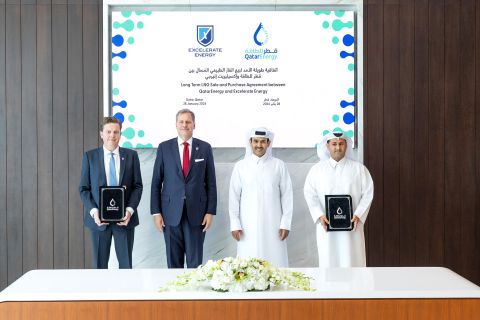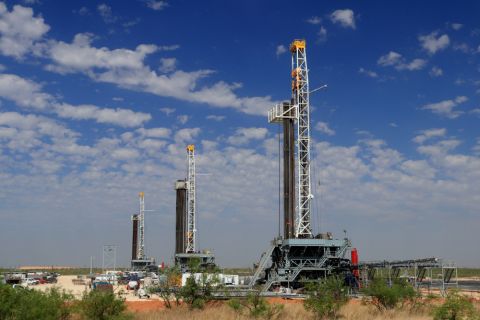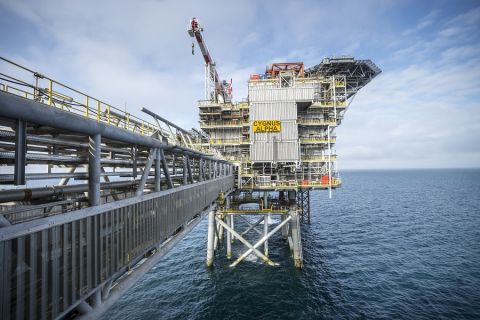More than anything, mature fields on the Norwegian Continental Shelf (NCS) need an increase in the rate of production drilling. This is according to Kjell Pedersen, president and CEO of Petoro, which manages the Norwegian government’s oil and gas interests via the State’s Direct Financial Interest (SDFI).
The SDFI comprises a portfolio of government-owned E&P licenses for petroleum and natural gas on the NCS. Petoro, also government-owned, has managed these license holdings since 2001. “We may need to double or triple the number of production wells per year to ensure that reserves are being produced and the potential for increased oil recovery secured,” he said.
According to Pedersen, drilling at today’s pace from aging platforms and drilling rigs could potentially keep the production curve on steep decline as well as raise the cost per barrel to a level where even normal oil price fluctuations could lead to early shutdowns. “This way we could suffer the loss of reserves as well as lost opportunities for EOR and near-field-developments,” he cautioned.
Petoro’s “most important job,” its website claims, “is to help ensure the highest possible value creation from the SDFI, value which benefits the whole of Norway.” Toward that end, the company’s aim is to be what it calls “a driving force” on the NCS, with the understanding that, as a licensee, partnership and collaboration are key to continued development and growth in new shelf projects.
Pedersen’s extensive international career includes a number of upstream and downstream positions at Exxon Corp. and later ExxonMobil Corp. He has held the title of president and CEO of Petoro since 2001. E&P recently discussed Norway’s near- and long-term energy objectives and what makes the NCS a sweet spot for proven, brownfield development.
What makes the Norwegian continental shelf attractive to E&P companies?
The NCS still has some 46 Bboe of proven oil and gas reserves to be produced. I believe that is where the attraction starts. And it really helps to have made the world’s biggest offshore oil discovery in 2011 - the Johan Sverdrup field.
This discovery was made right in the middle of the mature North Sea, and operators’ estimates suggest that License 265 could add 0.9 Bbbl to 1.5 Bbbl of recoverable oil to NCS reserves and License 501 could add 0.8-1 Bbbl to 8 Bbbl. We also found the 4 MMbbl to 600 MMbbl Skrugard and Havis oil fields, which confirm the Barents Sea as an oil province.
Norway is the number two gas exporter in the world, after Russia, and number seven oil exporter – on par with key OPEC countries.
Part of the attraction also is a predictable and still dynamic political regime and a fiscal system where the government not only collects from companies but also accepts a major share of the risk involved.
An example of the dynamic nature of the government is the exploration support offered to newcomers and smaller oil companies. This lifted the NCS out of an exploration downturn and led, in my mind, to the giant Johan Sverdrup and many smaller discoveries.
I should stop boasting, but I do need to mention that Norway’s second biggest export industry – after export of oil and gas – is export of goods and services to the international oil and gas industry. That too is attractive to international oil companies exploring for oil and gas and needing assistance from a qualified service industry to develop and operate discoveries.
What do you see as the main challenges of the offshore petroleum business in Norway?

Looking ahead, Norway has a number of development options. The agreement with Russia on a new borderline in the Barents Sea, for example, adds a huge new area that can be opened for E&P in a few years’ time. (Map courtesy of Norwegian Petroleum Directorate)
Market studies suggest the NCS is one of the world’s busiest offshore provinces globally right now – ahead of Brazil, the Gulf of Mexico, and other areas. I have two concerns in that respect: Constraints on human and other resources are driving cost and quality.
There is a risk that mature fields do not get the level of attention, capital, and competence they need in order to deliver maximal value.
Although new projects are strong magnets to money and competence, I believe the industry is capable of handling a high activity level provided we are realistic in our capacity assessment and willing to accept that some activities will see some deferrals when reality sets in. But I will be closely watching that our brownfields will not lose out in the competition for capital and competence. We need to make bold decisions while these fields still yield sufficient production and revenue to support larger investments for the long haul. If we have to prioritize between mature fields and new fields in our portfolio, the mature ones will stand first in line due to their time criticality.
How much is Petoro investing on the NCS, and what is the resulting production profile going to be over the next five to 10 years?
Since the establishment of Petoro in 2001, we have invested around NOK 20 billion (~US $3.4 billion) per year. Moving forward, we anticipate an annual investment level around 30 billion. Up to 2020, mature fields are key to the investment level and to a leveling off of the production decline. With some new fields being brought onstream in the same period, we are now looking at staying on the current production level beyond 2020 – a development I dare say is pretty impressive.
Looking even further into the future, Norway has a lot of options: The agreement with Russia on a new borderline in the Barents Sea adds a huge new area which can be opened for exploration and production in a few years’ time. We can choose to open up the northern part of the Barents Sea; acreage around the Jan Mayen island; and prolific areas outside the Lofoten, Vester?len, and Senja islands in the northern part of the Norwegian Sea.
If we continue to work hard, and Mother Nature continues to share her wealth with us, graduates joining the Norwegian petroleum industry today will be able to retire from the same industry. And so will their children – probably even some of their grandchildren.
Norway wants to be a leading country both in environmental affairs and in oil and gas production. Are those compatible objectives?
As an industry leader I support efforts of the Norwegian and other countries’ governments to establish international agreements on sustainable ways of running oil and gas industries, including managing the issue of greenhouse gases. There is no doubt that one reason why Norway has one of the cleanest oil production industries in the world is the combined efforts by various Norwegian governments and industry over many years to find a proper balance and provide incentives like a COtax to develop new technology and new ways of producing.
Where Norway really can play out its double role as “green” and “fossil” is in the gas business. There is no other means that can more effectively help Europe meet its greenhouse emissions obligations than a grand transition from coal to gas in European power generation. Gas is plentiful, easily available, and in no need of government subsidies.
In my view it is not a transition fuel but a long-term baseload energy partner among other energy forms like renewables and nuclear.
It is not at all clear how an integrated and reliable energy supply system can function without gas when the sun hides or the wind does not blow.
Norwegian sellers have installed the world’s biggest offshore gas transportation system. But to keep spending huge money on exploration and developing the gas infrastructure, Norway needs to hear from Europe that it looks at gas as part of the solution, not the problem.
Petoro is not an operator but manages the government’s shares of E&P licenses. How has the company changed in scope since its formation, and can you elaborate on its role in Norway with regard to other major operators such as Statoil?
The most important single change for Petoro as a company was the merger of Statoil and Hydro’s oil and gas business in 2006/07. Where Petoro in the past had been able to muster competence and capacity from one of the two competing Norwegian companies to test out proposals from the other, we now had to do more in-depth technical and commercial work of our own to manage the government’s shares and secure the government’s interests.
Since the merger was not followed by any substantial increase in Petoro’s operating budget from our owner, we had to reorganize rather than expand the organization. As a consequence we needed to concentrate our efforts on fewer fields. I feel that this turnaround has been successful and that we are a more focused and more influential licensee. On the other hand, we have had to leave a number of opportunities for value creation behind.
The most important trend that has influenced Petoro’s strategy is the maturing of the old giant fields. We manage big shares and have revised our strategy to realize the potential in and around these large mature fields.
The validity of such a strategy was confirmed in 2010 by the so-called ?m-commission for increased oil recovery offshore Norway. This commission suggested a total IOR potential of around 15 Bbbl. Through the government petroleum white paper and through stronger attention of oil companies, IOR and prudent management of mature fields are receiving increased attention.
In my view we still need to move beyond telling impressive historical tales and move strongly into new significant investments to secure the future of these excellent fields.
Recommended Reading
Marketed: Anschutz Exploration Corp. WI Opportunity in Converse County, Wyoming
2024-01-26 - Anschutz Exploration Corp. retained EnergyNet for the sale of its WI participation option in Converse County, Wyoming.
Excelerate Energy, Qatar Sign 15-year LNG Agreement
2024-01-29 - Excelerate agreed to purchase up to 1 million tonnes per anumm of LNG in Bangladesh from QatarEnergy.
UK’s Union Jack Oil to Expand into the Permian
2024-01-29 - In addition to its three mineral royalty acquisitions in the Permian, Union Jack Oil is also looking to expand into Oklahoma via joint ventures with Reach Oil & Gas Inc.
Permian Resources Continues Buying Spree in New Mexico
2024-01-30 - Permian Resources acquired two properties in New Mexico for approximately $175 million.
Eni, Vår Energi Wrap Up Acquisition of Neptune Energy Assets
2024-01-31 - Neptune retains its German operations, Vår takes over the Norwegian portfolio and Eni scoops up the rest of the assets under the $4.9 billion deal.




